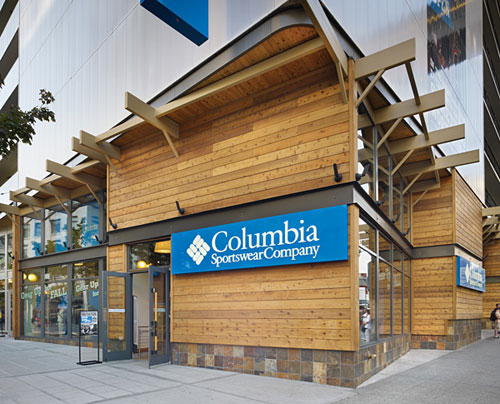Getting to Green: Life Cycle Analysis plus Forest Certification Give Western Redcedar High Marks in Sustainability
To ensure sustainability, wood products from certified forests should be specified, which admittedly is often a difficult and confusing task. According to MetaFore, a non-profit organization specializing in working with businesses to implement innovations relating to evaluating, selecting and manufacturing environmentally preferable wood and paper products, there are several certification systems relevant to the North American marketplace:
- The American Tree Farm System (ATFS) covers small, private, non-industrial landowners, typically family forest landowners. ATFS certifies contiguous parcels from 10 to 20,000 acres and was endorsed by PEFC in August of 2008.
- The Programme for the Endorsement of Forest Certification Schemes is a mutual recognition framework for national forest certification standards.
- The Canadian Standards Association is a national standard for sustainable forest management and tracking and labeling certified material. It covers operations in Canada. It is endorsed by PEFC.
- The Forest Stewardship Council is an international system covering forest management practices and the tracking and labeling of certified products and paper products with recycled content.
- The Sustainable Forestry Initiative® Program is a sustainable forest management standard targeting large industrial operations in Canada and the United States. It is endorsed by PEFC.
Environmental Impact |
Wood |
Steel |
Concrete |
Total Energy Use |
Lowest |
140% more |
70% more |
Greenhouse Gases |
Lowest |
45% more |
81% more |
Air Pollution |
Lowest |
42% more |
67% mor |
Water Pollution |
Lowest |
1900% more |
90% more |
Solid Waste |
Lowest |
36% more |
96% more |
Ecological Resource Use |
Lowest |
16% more |
97% more |
| Source: Athena Institute,www.athenasmi.org | |||
Â
Additionally, forest certification systems are emerging in Asia, Australia and South America. In developing countries in these areas, many forest managers lack the capacity to undergo a certification audit and maintain operations to a certification standard, and are working toward certifying operations in a gradual approach.
While certification is intended to enhance forest management practices around the world, most certified forestry operations are located in Europe and North America. A 2006 independent analysis by the UK government of the above-mentioned certification systems (except for ATFS) indicated that these systems do indeed harvest wood sustainably and legally. Jack Draper, Managing Director of the Western Red Cedar Lumber Association, advises architects interested in specifying certified wood products to obtain lumber from one of the respected certifying bodies. "With 90 percent of the world's forests uncertified, what's important is making sure your forest product is independently certified," he says. "We're strong supporters of third party certification - and some certification is far better than no certification at all."
 |
Knotty western redcedar siding is featured on Columbia Sportswear retail outlets. Photo: Ben Schneider |









